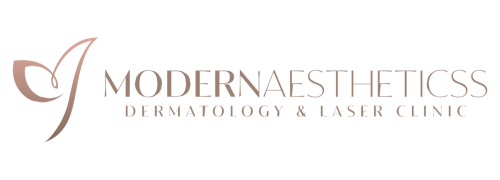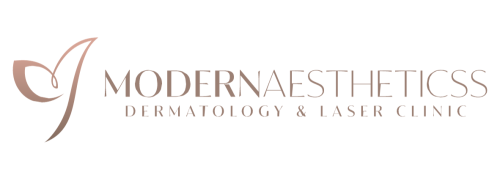Chemical peels are a skin treatment method used to enhance skin appearance by addressing issues caused by excessive dead skin cells. These problems can make skin appear thinner, dull, and uneven. By removing the outer damaged layer of skin, chemical peels reveal younger, healthier skin. They are also effective in reducing the visibility of acne scars. Superficial chemical peels in Dubai & Abu Dhabi can treat various skin imperfections effectively.
It’s a cosmetic procedure designed to enhance skin appearance and address any abnormalities or imperfections. Chemical peels are categorized based on the strength of their chemical ingredients. While effective, their results are temporary and vary by peel type. Post-procedure, you’ll enjoy smoother, more even skin without scars or wrinkles. In Dubai, chemical peels target the outermost layer of skin, the epidermis, using alpha-hydroxy acids to exfoliate and promote cell renewal and collagen production.
Chemical Peel Cost in Dubai: What to Expect
The price of a chemical peel in Dubai can vary based on several factors, including the type of peel and the reputation of the clinic.
Average Chemical Peel Cost in Dubai: Typically, prices range from AED 600 to AED 1500 per session, depending on the type and depth of the peel. But the average charge is AED 999
Factors Influencing Chemical Peel Cost
Several factors influence the cost of chemical peel treatments in Dubai:
- Type of Peel: Costs vary depending on whether the peel is superficial, medium, or deep.
- Clinic Reputation: Established clinics with experienced dermatologists may charge higher fees.
- Number of Sessions: Optimal results may require multiple sessions, impacting the overall cost.
Aim of Chemical peel treatment
At Modern Aestheticss clinic, this treatment focuses on enhancing skin appearance and texture. It efficiently addresses all skin imperfections and irregularities. The treatment offers various types based on the strength of its chemical components. While the results are effective, they are not permanent and vary depending on the peel type used. Following treatment, you can expect smoother, more radiant skin, free from scars and wrinkles. For those seeking an affordable option with minimal risk of side effects, this treatment provides an opportunity to achieve an even skin tone.
Aim of Chemical peel treatment
At Modern Aestheticss clinic, this treatment focuses on enhancing skin appearance and texture. It efficiently addresses all skin imperfections and irregularities. The treatment offers various types based on the strength of its chemical components. While the results are effective, they are not permanent and vary depending on the peel type used. Following treatment, you can expect smoother, more radiant skin, free from scars and wrinkles. For those seeking an affordable option with minimal risk of side effects, this treatment provides an opportunity to achieve an even skin tone.
Results of Chemical peels Dubai:
Chemical peels are cosmetic procedures used to enhance skin texture and appearance by applying a chemical solution that removes damaged outer skin layers. Here’s a detailed explanation of what chemical peels can achieve:
- Improvement in Skin Texture: Chemical peels smooth rough skin by eliminating dead cells and promoting cell turnover, resulting in a softer, more even skin surface.
- Reduction of Fine Lines and Wrinkles: By exfoliating and boosting collagen production, chemical peels can diminish fine lines and wrinkles, especially those caused by aging and sun damage.
- Evening of Skin Tone: They effectively reduce hyperpigmentation such as sun spots and age spots, promoting a smoother and more uniform complexion while minimizing dark spots.
- Treatment of Acne and Scars: Chemical peels help clear acne by unclogging pores, reducing inflammation, and preventing future breakouts. Over time, they also fade acne scars, improving overall skin appearance.
- Enhanced Skin Radiance: The exfoliating properties of chemical peels remove dull, dead skin cells, revealing fresh, radiant skin underneath. This enhances skin luminosity and imparts a healthy glow.
- Promotion of Youthful Skin: Regular chemical peel treatments stimulate collagen production deep within the skin, resulting in firmer, more elastic skin and reducing signs of aging like sagging and fine lines.
Overall, chemical peels rejuvenate the skin, addressing various concerns and promoting a more youthful, radiant appearance. Results may vary based on the type and strength of the peel used, as well as individual skin conditions and treatment objectives.
Key benefit of Chemical peel treatment
Chemical peels offer several key benefits that enhance skin health and appearance:
- Improved Skin Texture: Chemical peels effectively smooth rough skin by eliminating dead cells and stimulating cell renewal, resulting in a softer and more even texture.
- Minimally Invasive with Minimal Downtime: As a minimally invasive procedure, chemical peels require little downtime compared to more intensive treatments. This allows individuals to resume their daily activities soon after treatment.
- Visible Results: Chemical peels visibly enhance skin appearance by reducing fine lines, wrinkles, and hyperpigmentation, promoting clearer and more youthful-looking skin.
- Suitable for All Skin Types: Chemical peels are adaptable to various skin types and textures, addressing specific concerns whether skin is oily, dry, or sensitive.
- Enhanced Skin Tone: By promoting exfoliation and diminishing pigmentation irregularities, chemical peels contribute to a more uniform skin tone and brighter complexion.
- Swift Recovery: Unlike more invasive options, chemical peels typically involve minimal discomfort and offer a quick recovery period, making them convenient for individuals with active lifestyles.
- Comfortable Procedure: Chemical peels are generally well-tolerated with minimal discomfort during and after treatment, ensuring accessibility for those seeking skin rejuvenation.
Overall, chemical peels are valued for their effective skin rejuvenation capabilities, delivering multiple benefits that enhance overall skin health and radiance.
Types of chemical peels
Depending on their depth of penetration, chemical peels are categorized into three main types:
Superficial Peels:
- These peels typically do not require anesthesia.
- A solution containing glycolic acid or salicylic acid is applied using a cotton ball or brush.
- Recovery time is usually short, about 2 to 3 days, as they do not penetrate deep into the skin.
Medium Peels:
- Applied using a cotton-tipped applicator, medium peels involve solutions with trichloroacetic acid, sometimes combined with glycolic acid.
- Patients may experience stinging sensations for up to 15 minutes during the procedure.
- They penetrate deeper into the skin compared to superficial peels, requiring a longer recovery period.
Deep Peels:
- Deep peels are the most intensive and often require extensive local anesthesia due to potential discomfort.
- Phenol is applied using a cotton-tipped applicator, resulting in a noticeable change in skin color.
- These peels penetrate deeply into the skin layers to address severe skin issues, necessitating a longer recovery time.
Each type of chemical peel offers varying degrees of exfoliation and skin rejuvenation, tailored to different skin concerns and treatment goals. It’s essential to consult with a qualified dermatologist to determine the most suitable type of peel based on individual skin type and desired outcomes.
How Does the Procedure Work?
The chemical peel procedure is a skin resurfacing method designed to cleanse and rejuvenate the skin. It is performed as an outpatient treatment using a chemical solution. Here’s how the procedure works:
- A dermatologist assesses your skin and devises a personalized treatment plan based on your skin condition and goals.
- If undergoing a deep peel, the treatment area is first numbed with a topical anesthetic, and protective goggles are provided.
- Your face is cleansed to remove excess oils.
- The targeted area is then numbed for comfort.
- The chemical solution is applied to the treatment area.
- The solution is allowed to dry and work on the skin.
- After a specified time, the solution is neutralized and removed.
- This exfoliation process helps to smooth the skin by removing dead layers and promoting skin renewal.
This procedure aims to improve skin texture and appearance by addressing various skin concerns effectively and safely
best chemical peel dubai | chemical peel near me | chemical peels in dubai | face peeling dubai | chemical peel treatment cost dubai


